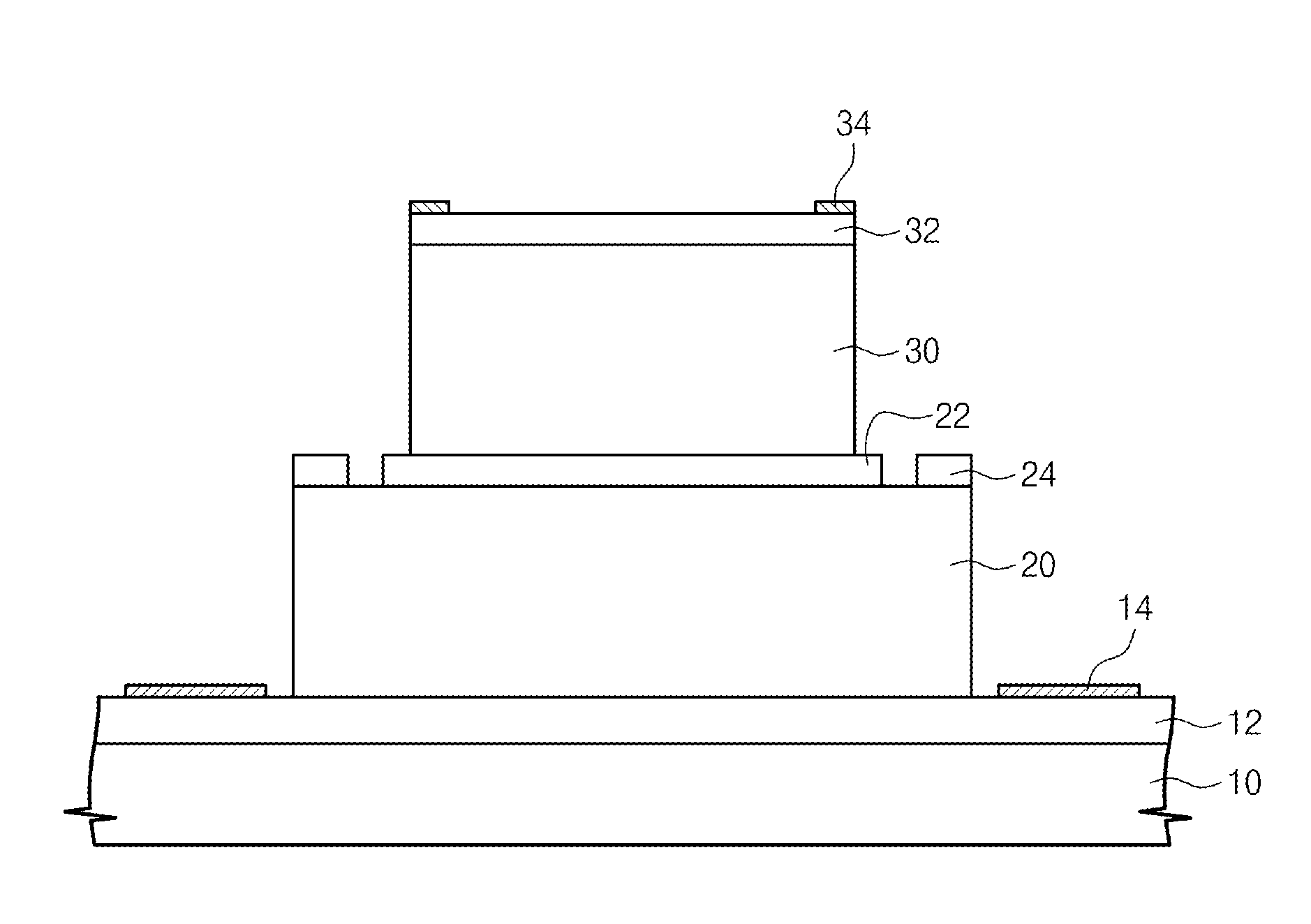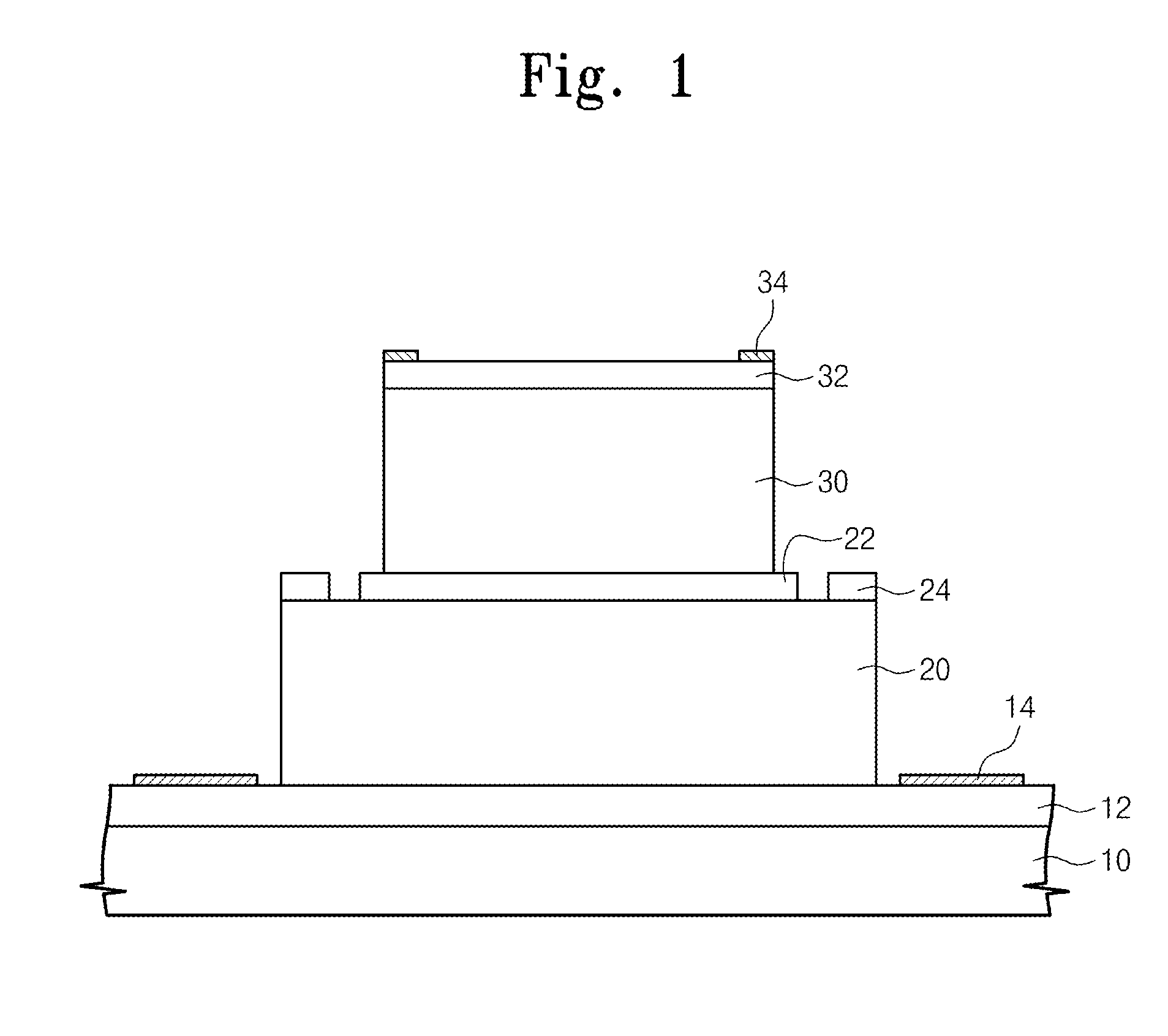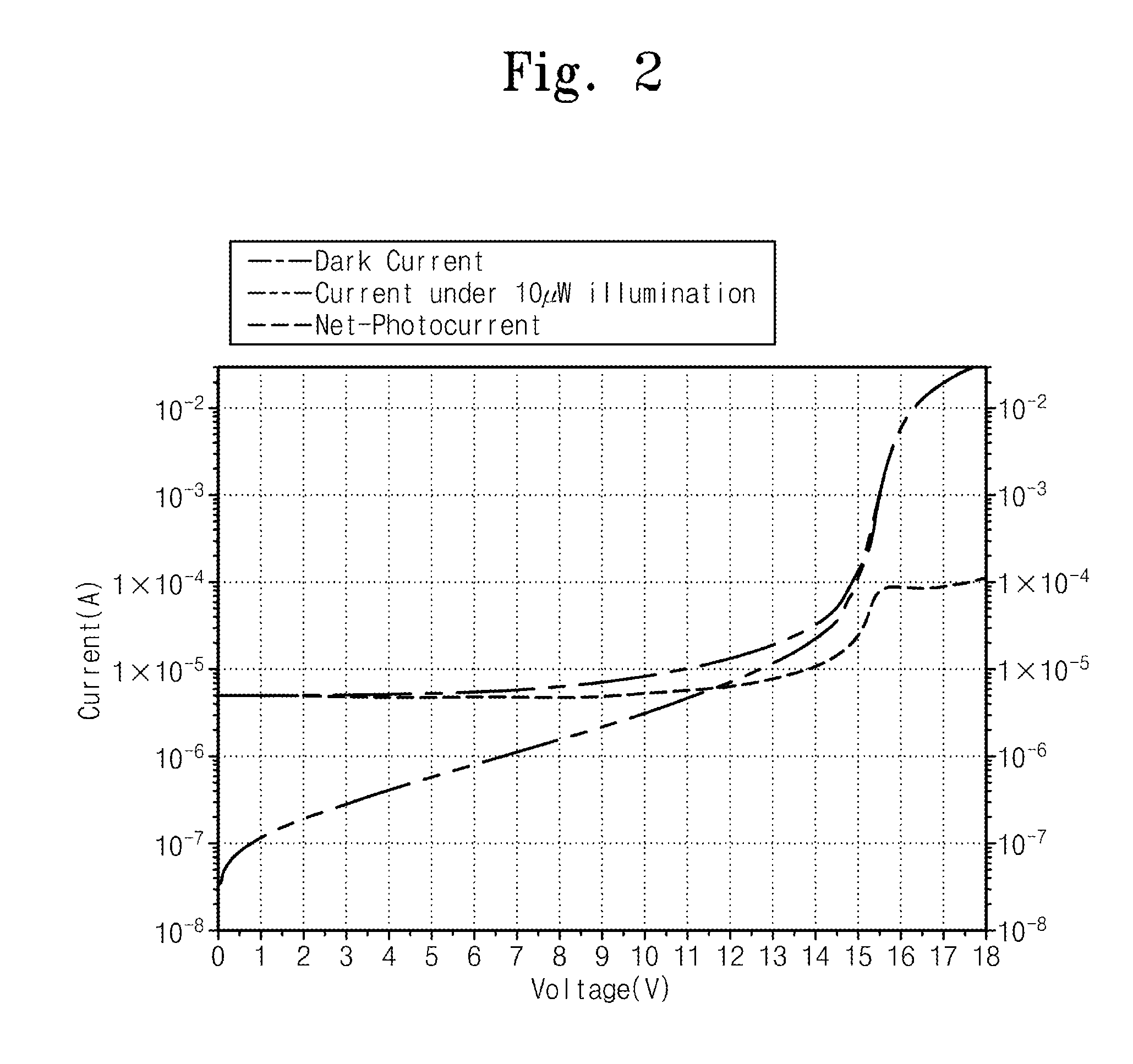Low-voltage high-gain high-speed germanium photo detector and method of fabricating the same
a germanium photo detector and high-gain technology, applied in the field of photodetectors, can solve the problems of high operation voltage for achieving high sensitivity, high fabrication cost, high power consumption, etc., and achieve the effects of high gain, low voltage and high speed
- Summary
- Abstract
- Description
- Claims
- Application Information
AI Technical Summary
Benefits of technology
Problems solved by technology
Method used
Image
Examples
first embodiment
[0047]FIG. 1 is a sectional view illustrating a photodetector according to the inventive concept.
[0048]Referring to FIG. 1, the photodetector according to the first embodiment of the inventive concept may include a substrate 10, a first contact layer 12, a first electrode 14, a carrier multiplication layer 20, a charge layer 22, an absorption layer 30, a second contact layer 32, and a second electrode 34.
[0049]The substrate 10 may include silicon. The first contact layer 12 may include silicon doped with first impurities. The first impurities may be n-type donors, such as phosphorous. For example, the first contact layer 12 may include n++ silicon. The carrier multiplication layer 20 and the first electrode 14 may be provided on the first contact layer 12.
[0050]The carrier multiplication layer 20 may include intrinsic germanium. The carrier multiplication layer 20 may be configured to amplify an electrical signal in the absorption layer 30. For example, the carrier multiplication la...
second embodiment
[0061]FIG. 6 is a sectional view illustrating a photodetector according to the inventive concept.
[0062]Referring to FIG. 6, the photodetector according to the second embodiment of the inventive concept may include a super lattice structure consisting of a third material layer 31 and a fourth material layer 33, which may be provided as the absorption layer 30. The second embodiment may differ from the first embodiment, in that intrinsic germanium of the absorption layer 30 is replaced with the superlattice structure. The third and fourth material layers 31 and 33 of the superlattice structure may be different from each other in terms of a mixing ratio (mole fraction) of silicon to germanium. For example, the third material layer 31 may include Si1-xGex, and the fourth material layer 33 may include Si1-yGey.
[0063]FIG. 7 is a sectional view illustrating a photodetector according to a third applied embodiment of the inventive concept.
[0064]Referring to FIG. 7, the photodetector accordin...
third embodiment
[0066]FIG. 8 is a sectional view illustrating a photodetector according to the inventive concept.
[0067]Referring to FIG. 8, the photodetector according to the third embodiment of the inventive concept may include the absorption layer 30 including both of a superlattice layer 36 and an intrinsic layer 38. According to the third embodiment, the absorption layer 30 of the first embodiment may be replaced with the superlattice layer 36 and the intrinsic layer 38. As shown in FIG. 8, the superlattice layer 36 and the intrinsic layer 38 may be formed to have the same thickness (e.g., half the thickness of the absorption layer 30) as each other, but example embodiments of the inventive concept may not be limited thereto. The superlattice layer 36 may be a silicon / germanium superlattice and include the third material layer 31 and the fourth material layer 33. The third material layer 31 may include Si1-xGex, and the fourth material layer 33 may include Si1-yGey. The intrinsic layer 38 may i...
PUM
 Login to View More
Login to View More Abstract
Description
Claims
Application Information
 Login to View More
Login to View More - R&D
- Intellectual Property
- Life Sciences
- Materials
- Tech Scout
- Unparalleled Data Quality
- Higher Quality Content
- 60% Fewer Hallucinations
Browse by: Latest US Patents, China's latest patents, Technical Efficacy Thesaurus, Application Domain, Technology Topic, Popular Technical Reports.
© 2025 PatSnap. All rights reserved.Legal|Privacy policy|Modern Slavery Act Transparency Statement|Sitemap|About US| Contact US: help@patsnap.com



